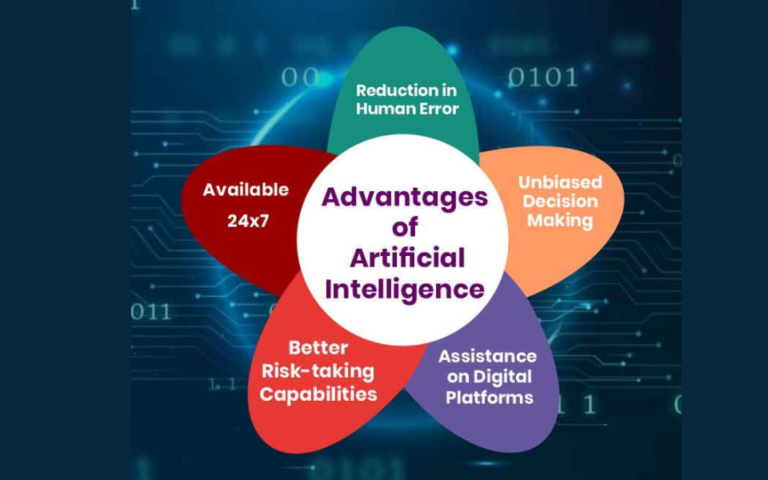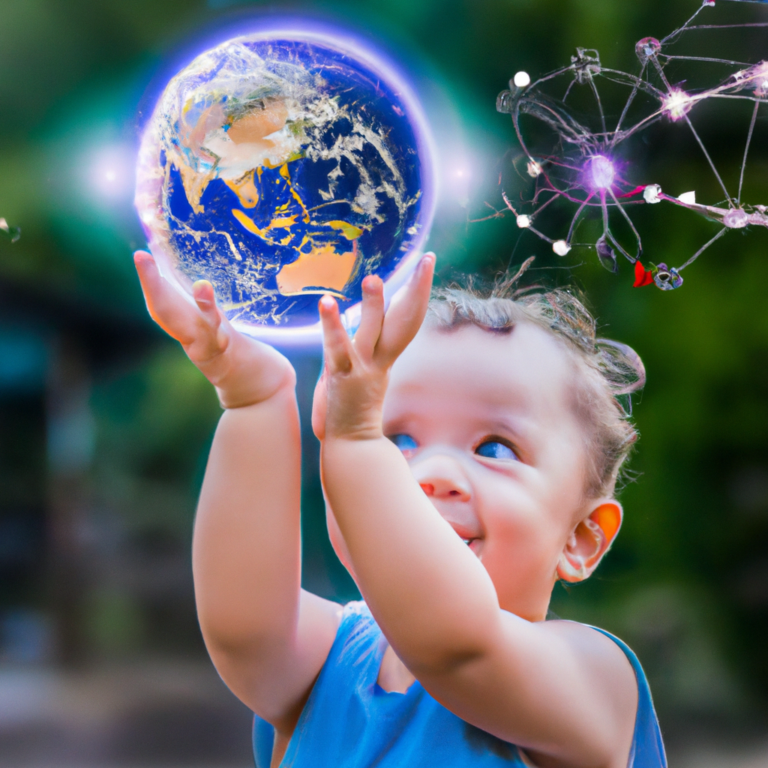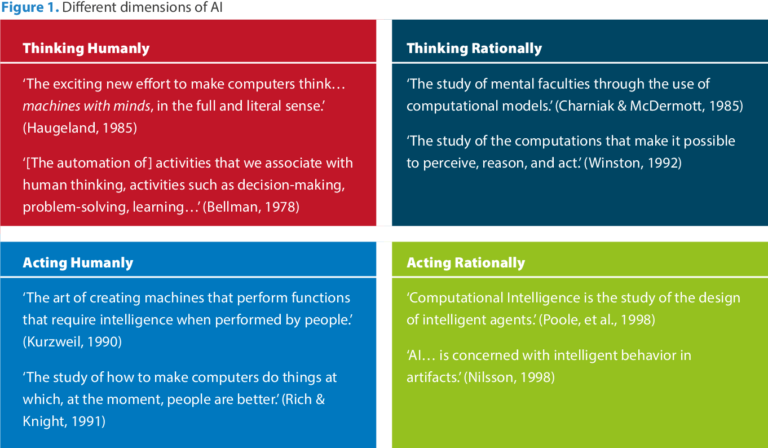AI For Creativity: How AI Can Help Us Create New And Innovative Art, Music, And Literature

In the realm of creativity, the power of artificial intelligence (AI) is beginning to make waves. From groundbreaking art to mesmerizing music compositions, and even thought-provoking literature, AI is revolutionizing how we approach creativity. By harnessing the capabilities of AI, we are now embarking on an exciting journey that promises to unlock endless possibilities for the future of imaginative expression. Get ready to explore the fascinating ways AI is shaping the world of art, music, and literature. Let’s delve into the realm of AI for creativity and discover the extraordinary potential it holds.
I. Understanding AI
A. What is AI?
AI, short for Artificial Intelligence, refers to the development of computer systems that have the ability to perform tasks that would typically require human intelligence. These systems are designed to simulate human thought processes, such as learning, reasoning, and problem-solving. AI is a broad field that encompasses various subfields, including machine learning, deep learning, natural language processing, and computer vision.
B. How does AI work?
AI systems are developed using algorithms that enable machines to analyze and interpret vast amounts of data. These algorithms allow the machines to recognize patterns, make predictions, and even learn from their experiences. Machine learning, a subset of AI, involves training algorithms using large datasets, enabling the systems to improve over time through exposure to new data. Deep learning, on the other hand, uses neural networks to replicate the functioning of the human brain, allowing machines to process complex information.
C. Types of AI
There are different types of AI, each with its own capabilities and limitations. Narrow or weak AI refers to systems designed to perform specific tasks, such as language translation or image recognition, without exhibiting general intelligence. Strong AI, on the other hand, refers to systems that possess the ability to understand, learn, and think like humans. However, the development of strong AI is still a distant goal. Another branch of AI is called general AI, which refers to systems that possess the ability to perform any intellectual task that a human can do.
II. AI and Art
A. AI-generated Art
AI has emerged as a powerful tool for creating art. By training AI models on extensive datasets of existing artworks, these systems can generate new and unique pieces of art. AI-generated art can range from paintings and sculptures to digital art and music. The ability of AI to combine different artistic styles and elements in novel ways has brought forth new possibilities in the world of art, pushing the boundaries of creativity.
B. Collaborative Art with AI
Rather than replacing human creativity, AI can serve as a collaborator and catalyst for artistic creation. Artists can work alongside AI systems to explore new artistic directions, using AI as a source of inspiration or as a tool to enhance their creative process. Collaborative art with AI enables artists to merge their own artistic intuition with the computational capabilities of AI, resulting in unique and innovative artworks that would not have been possible without this collaboration.
C. AI as an Artistic Tool
AI can be used as a tool by artists to assist in various aspects of the creative process. For example, AI can help artists generate ideas, experiment with different styles or techniques, and even provide suggestions and feedback during the artistic process. By leveraging the computational capabilities of AI, artists can enhance their artistic abilities, explore new artistic territories, and elevate their creative output.

III. AI and Music
A. AI-generated Music
AI systems have made significant advancements in generating music that can rival compositions created by human composers. By being trained on enormous music datasets, AI models can analyze musical patterns and structures, enabling them to create original compositions that capture different styles and genres. AI-generated music has the potential to introduce new sounds and harmonies, revolutionizing the music industry and challenging traditional notions of musical creativity.
B. Music Composition Assistance
AI can also provide valuable assistance to human composers in the process of music composition. By analyzing their musical compositions, AI systems can offer suggestions for harmonies, melodies, or arrangements, helping composers refine and improve their work. This collaboration between AI and composers can lead to the exploration of new musical directions and the creation of compositions that push the boundaries of traditional music.
C. AI in Music Production
AI is not limited to composing music; it has also found applications in music production. From generating backing tracks to assisting in mixing and mastering, AI systems can automate various aspects of the music production process. With AI’s ability to process and analyze large volumes of audio data, it can enhance the quality and efficiency of music production, enabling musicians and producers to create high-quality music more effectively.
IV. AI and Literature
A. AI-generated Literature
AI has demonstrated its ability to generate text that can resemble human-written literature. By training on extensive text datasets, AI models can generate stories, poems, and even entire novels. While AI-generated literature may lack the nuanced emotions and contextual understanding of human authors, it presents a new avenue for exploring storytelling and language generation, potentially opening up new literary possibilities.
B. Automated Writing Support
AI can be a valuable tool for writers, providing assistance throughout the writing process. From grammar and spelling corrections to suggesting alternative sentence structures or vocabulary choices, AI-powered writing support systems help writers improve the clarity and quality of their writing. These systems can save writers time and effort by automating mundane tasks, allowing them to focus on the more creative aspects of writing.
C. Novelty and Creativity
The use of AI in literature raises questions about the role of human creativity in the creation of literary works. While AI can generate text that closely mimics human writing, the ability to truly understand and imbue emotions, themes, and literary devices may still be limited. Human creativity, with its depth of emotions, cultural understanding, and intuition, remains a vital aspect of literature, ensuring that originality and creativity continue to flourish.

V. Ethical Considerations
A. Attribution and Ownership
With the rise of AI-generated content, the issue of attribution and ownership becomes crucial. Who should be credited as the creator when AI is involved in the creative process? Should AI systems be considered tools or collaborators? Addressing these questions is essential to ensure fair recognition and protection of the intellectual property rights of both human creators and the AI systems they may collaborate with.
B. Human vs. AI Creativity
AI’s ability to generate creative works raises philosophical questions about the nature of creativity itself. Is AI capable of true creativity, or is it merely a sophisticated imitation? Understanding the boundaries and intersections of human and AI creativity is essential to appreciate and evaluate the value and authenticity of AI-generated creative outputs.
C. Cultural Impact
The integration of AI into the creative fields has significant cultural implications. AI-generated art, music, and literature may challenge existing cultural norms and artistic traditions. It can also shape cultural expressions by introducing new ideas, aesthetics, and perspectives. It is important to consider the cultural impact of AI-generated creations and ensure that ethical and diversity considerations are taken into account.
VI. Challenges and Limitations
A. Bias in AI-generated Content
AI systems are trained on vast amounts of existing data, which can inadvertently introduce biases into the generated content. These biases reflect societal, cultural, or historical prejudices present in the training data. Addressing and mitigating these biases is crucial to ensure AI-generated content promotes diversity, inclusivity, and fairness in the creative fields.
B. Authenticity and Emotional Depth
While AI can produce visually pleasing art, captivating music, or engaging literature, questions remain about the authenticity and emotional depth of AI-generated creations. Human creativity often stems from personal experiences, emotions, and cultural contexts that AI may struggle to fully comprehend. Exploring the emotional and authentic aspects of creative works remains a challenge for AI technology.
C. The Role of Intuition
Intuition plays a significant role in the creative process. Human creators rely on their intuition to make spontaneous decisions, challenge conventions, and infuse their work with originality. AI systems, based on algorithms and data, lack this innate intuitive understanding. The interplay between intuition and AI-driven analysis poses an ongoing challenge in harnessing the full potential of AI for creativity.
VII. The Future of AI and Creativity
A. Advancements and Possibilities
The field of AI for creativity continues to evolve rapidly, with advancements opening up endless possibilities. As AI technologies improve, we can expect even more lifelike and emotionally resonant creative outputs. AI may enable artists, musicians, and writers to explore uncharted territories, experiment with new genres, and create immersive experiences that were once thought to be beyond the reach of human imagination.
B. Human-AI Collaboration
Rather than replacing human creativity, the future lies in collaboration between humans and AI. AI can augment and enhance human creativity, serving as a source of inspiration, a tool for experimentation, and a means to elevate creative output. By combining human intuition, emotions, and cultural understanding with AI’s computational power, we can unlock new frontiers in creativity.
C. Evolving Definition of Creativity
As AI continues to permeate the creative domains, the definition and perception of creativity itself may change. The interplay between human and AI creativity could redefine artistic excellence, challenge traditional notions of originality, and reshape artistic expressions. Embracing this evolving definition of creativity is crucial to fully harnessing the creative potential of AI.
VIII. Conclusion
AI has emerged as a powerful tool in the creative fields of art, music, and literature. From generating innovative art and music to assisting in the creative process and providing writing support, AI has the potential to revolutionize creativity. However, ethical considerations, such as attribution, biases, and cultural impact, must be addressed. Challenges, like bias in AI-generated content and the role of intuition, need to be overcome. The future of AI and creativity lies in collaboration between humans and AI, with advancements opening up endless possibilities and reshaping our understanding of creativity. Embracing this future and evolving definition of creativity is essential to fully embrace the potential of AI for creativity.
Want to write articles like us? Get your copy of AI WiseMind here!






